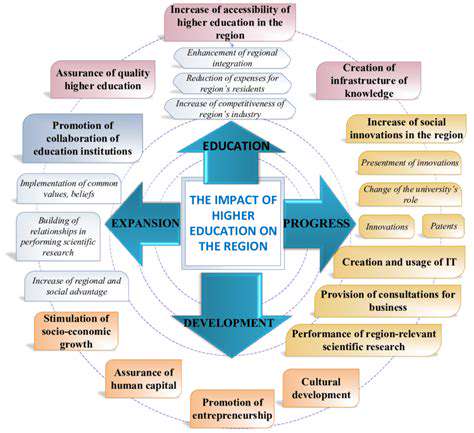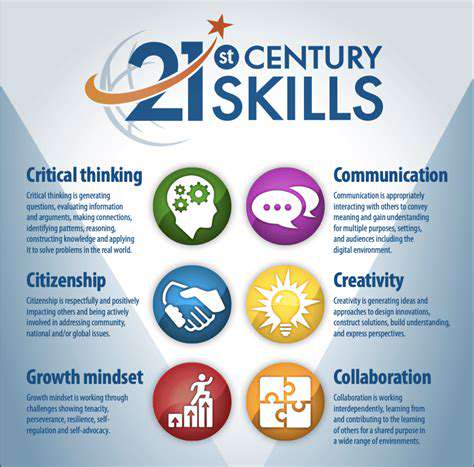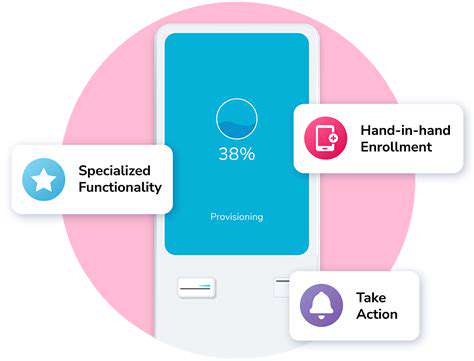Ethical AI in Education: Ensuring Equity and Fairness
Promoting Transparency and Explainability in AI Systems
Understanding the Need for Transparency
Promoting transparency in AI systems is crucial for ethical AI in education. Students, teachers, and parents deserve to understand how AI tools are making decisions that affect their learning experiences. This includes knowing the criteria used for personalized learning recommendations, assessment scoring, and even the selection of learning materials. Without transparency, trust erodes, and the potential for bias and unfair outcomes increases. A lack of transparency can also stifle critical thinking, as students may not understand the reasoning behind AI-driven processes, hindering their ability to evaluate and interpret information effectively.
Transparency, in this context, extends beyond simply providing access to the data used by the AI. It also involves explaining the algorithms' decision-making processes in a way that is understandable to non-technical audiences. This explanation should be accessible and understandable, avoiding jargon and technical complexities. By providing clear explanations, we empower individuals to engage critically with the AI systems in their educational settings and make informed decisions based on the reasoning behind the tools.
Ensuring Explainable AI for Fairness and Equity
Explainable AI (XAI) is essential for ensuring fairness and equity in educational settings. AI systems, even when trained on diverse data, can still perpetuate existing biases or create new ones. By incorporating explainability, we can identify and mitigate these biases in the algorithms. This includes scrutinizing the data used for training, the algorithms themselves, and the specific outputs of the AI in relation to various student demographics. Understanding the reasoning behind AI-driven decisions, like placement recommendations or individualized learning plans, allows educators and stakeholders to identify and address potential disparities.
For example, if an AI system consistently underperforms in identifying the needs of students from particular socioeconomic backgrounds, XAI can help us understand why. This understanding enables proactive interventions to ensure that all students receive equitable educational opportunities. By making the AI's rationale transparent, we can create a more just and inclusive learning environment for all students. This is particularly crucial for ensuring that AI tools don't exacerbate existing inequalities, but rather contribute to a more equitable learning experience for all.
Building Trust and Fostering Collaboration
Transparency and explainability are vital for building trust between students, educators, and parents regarding AI's role in education. When AI systems are opaque, users often feel alienated and distrustful of the technology. By fostering transparency, we can create a sense of shared understanding and collaboration in utilizing AI tools for learning enhancement. This can involve open discussions about the capabilities and limitations of AI, providing clear communication about how AI systems are integrated into the educational process, and actively involving stakeholders in the development and implementation of AI tools.
Fostering collaboration between educators, students, and AI developers is a critical step in ensuring that AI systems effectively serve educational goals. This collaboration can involve co-creating learning materials, designing AI-powered assessments, and working together to address potential biases or limitations. Ultimately, this collaborative approach can help develop AI systems that are not just transparent and explainable but also responsive to the diverse needs of learners and educators. Open communication and a shared understanding of the AI's role can build trust and make AI a valuable partner in education.
By focusing on the user experience and involving all stakeholders in the design and implementation of AI systems, we can cultivate an environment where AI is seen as a powerful tool for enhancing education rather than a source of anxiety and distrust. This is paramount to a successful implementation of AI in the educational sphere.

Read more about Ethical AI in Education: Ensuring Equity and Fairness
Hot Recommendations
- The Gamified Parent Teacher Conference: Engaging Stakeholders
- Gamification in Education: Making Learning Irresistibly Fun
- The Future of School Libraries: AI for Personalized Recommendations
- EdTech and the Future of Creative Industries
- Empowering Student Choice: The Core of Personalized Learning
- Building Community in a Hybrid Learning Setting
- VR for Special Education: Tailored Immersive Experiences
- Measuring the True Value of EdTech: Beyond Adoption Rates
- Addressing Digital Divide in AI Educational Access
- Preparing the Workforce for AI Integration in Their Careers











